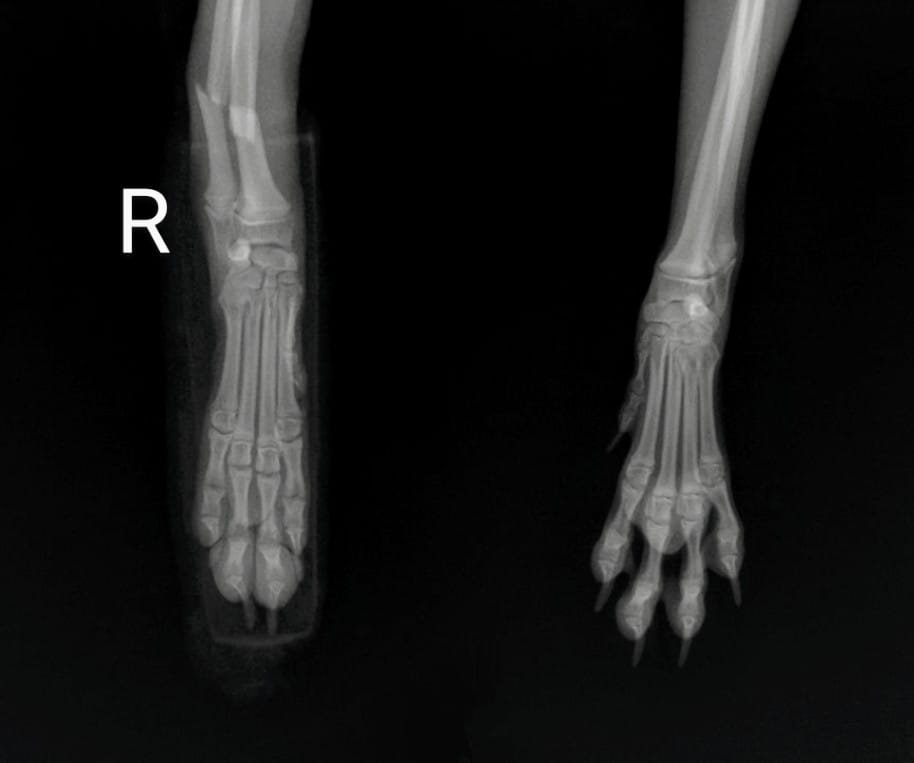Radioulnar fracture in toy breed
Female, 5 months old, 1.7 kg Pomeranian dog
presented with acute 4 grade right forelimb lameness
trauma 3 days ago, owner reported the dog fell down from a friend’s hands.
Right forelimb radiographs reveal complete closed distal diaphysis short oblique traumatic radial fracture with moderate cranial displacement, and distal diaphyseal transverse ulnar fracture minimally displaced.
Splint bandage performed previously by referring veterinarian was replaced due to wrong size of splint (the splint was too short, the dorsal edge of the splint ends at the fracture level) and lack of soft padding.
A robert-jones splint bandage was placed with splint positioned caudally, from the tows until the elbow level.
Surgery with internal fixation was programmed for 24h later.
Surgery with internal fixation was performed.
A Fixin Micro-Series 1.7mm T-shape Cuttable Locking plate was used, with 3 screws on each bone segment.
A robert-jones splint bandage was placed postoperatively with the splint positioned caudally, from the tows until the elbow level, just below anconeal process.
Post-op instruction consist mainly of regular bandage check-up (every 5 days, until 14-21 days post op), patient confinement and/or restricted activity, pain management primarily with NSAID’s (additional pain management is decided according to surgeon preference and patient’s age) , initial follow-up radiographs are predicted to be performed at 4 & 8 weeks.
Follow-up at 10 weeks post-op present good bone healing and a dynamization is performed, by removing 3 screws.
The dynamization of fracture fixation is a technique used to improve fracture healing process by strategically reducing the implant rigidity and promote micro-movement at the fracture site, which then improve bone strength and stability.
The dynamization technique is especially used in small and toy breed radio-ulnar fracture management.
Follow-up at 4 months post-op a second dynamization is performed,
by removing the remaining 3 screws, leaving the plate in place.
A soft protective bandage is used for a few days.
Post-op instruction consist of bandage and suture removal after 7-10 days post-op, restricted activity, follow-up radiographs are predicted to be performed after 4-8 weeks.







